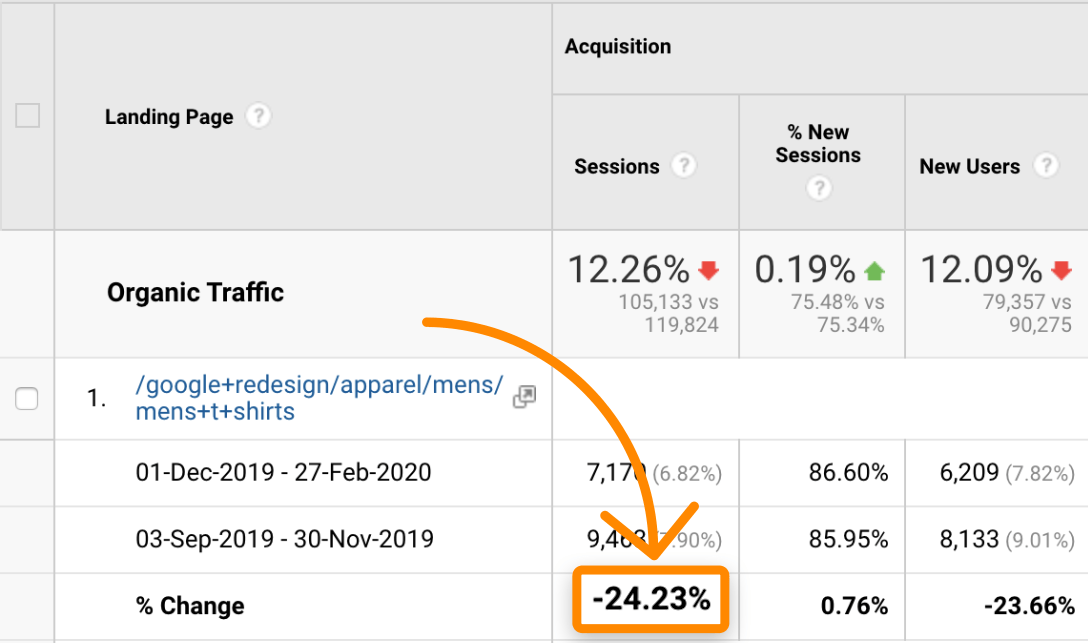When Does the Tracking Code Send an Event: A Comprehensive Overview
Wiki Article
Introducing the Extensive Abilities of Analytics: Discover What Google Analytics Can Track for Your Web Site Success
In the electronic landscape, the world of analytics stands as a beacon of insight, providing a riches of information that can introduce the detailed information of on the internet interactions. Google Analytics, a powerful tool in this domain, holds the key to comprehending the performance of your site with accuracy and deepness. From tracking individual actions patterns to dissecting the origins of your website traffic, Google Analytics brings forth a chest of info that can shape your online methods. As we peel back the layers of its capacities, a globe of opportunities arises, assuring to brighten the path to site success via thorough measurement and analysis.User Habits Insights
User habits insights within Google Analytics deal beneficial information on exactly how users engage with a website, helping in thorough evaluation and optimization approaches. These insights give a deep understanding of user actions, preferences, and patterns, enabling internet site owners to make informed decisions to improve the user experience and drive conversions - when does the tracking code send an event. By tracking metrics such as page views, session periods, bounce rates, and conversion prices, Google Analytics allows customers to gauge the performance of their web content and style aspectsIn Addition, Google Analytics can reveal the sources of traffic, whether from organic search, social networks, references, or direct brows through. This information helps website proprietors tailor their advertising and marketing approaches to target high-performing networks and enhance projects for much better outcomes. Recognizing user behavior also consists of assessing the devices and web browsers used to access the website, giving insights right into enhancing for various screen sizes and platforms.
Traffic Source Analysis
With insights on customer habits in hand, the emphasis changes in the direction of examining the numerous resources that drive traffic to a website in Google Analytics. Understanding where your site traffic comes from is essential for maximizing advertising and marketing methods and enhancing overall efficiency. Google Analytics provides detailed tools to track the traffic sources that bring visitors to your site.
In Addition, Google Analytics allows you to dig much deeper into each website traffic source to discover useful insights. You can track metrics such as bounce price, typical session period, and conversion rates for each web traffic channel. This data enables you to make educated decisions concerning where to designate sources and just how to maximize your advertising and marketing initiatives for far better results. By leveraging web traffic source evaluation in Google Analytics, you can enhance the visibility and success of your website.
Conversion Price Surveillance
Just how can organizations effectively track and evaluate their conversion rates utilizing Google Analytics? Conversion rate monitoring is a vital element of recognizing the success of a site subsequently visitors right into clients. Google Analytics gives effective tools to track conversion prices by establishing objectives and ecommerce monitoring. By specifying certain activities as objectives, such as newsletter sign-ups or purchases, organizations can check the amount of visitors full these actions, thus figuring out the conversion price.Through Google Analytics, companies can delve deeper right into their conversion information by evaluating metrics like conversion funnels, which reveal the steps users take before converting. This understanding helps recognize prospective bottlenecks in the conversion process, permitting targeted renovations to improve conversion prices. In Addition, Google Analytics offers the capacity to segment conversion information based upon different measurements like website traffic resources or user demographics, giving a detailed sight of how different segments effect conversion rates.
Internet Site Performance Metrics
Furthermore, internet site efficiency metrics also encompass variables like mobile responsiveness and cross-browser compatibility. With the boosting use smart phones for surfing, guaranteeing that an internet site is optimized for numerous screen sizes and devices is paramount (when does the tracking code send an event). Keeping track of these metrics allows businesses to determine and correct any kind of performance traffic jams, eventually improving the general customer experience and making best use of the Visit Website site's capacity for success. By Go Here leveraging tools like Google Analytics to track and evaluate these metrics, organizations can make enlightened choices to boost their website performance and drive much better outcomes.
Goal Tracking and Optimization
To efficiently determine and enhance the efficiency of an electronic system, executing goal monitoring and optimization approaches is crucial. Objective monitoring in Google Analytics permits site owners to define specific actions they think about important, such as e-newsletter sign-ups, product acquisitions, or kind entries. By establishing up objectives, companies can track the conversion prices and understand how successfully their internet site is guiding users in the direction of these desired outcomes.Optimization, on the other hand, involves examining data gathered via goal monitoring to make enlightened choices on enhancing website efficiency. This process may include A/B testing various page components, refining marketing strategies based upon conversion information, or improving user experience to enhance objective conclusion rates. Google Analytics gives important insights into user habits, which can be leveraged to adjust the digital system for optimum efficiency.
Final Thought
To conclude, Google Analytics uses a large range of abilities for tracking internet site success, including individual habits insights, traffic source analysis, conversion rate monitoring, website efficiency metrics, and goal my blog monitoring. By making use of these devices successfully, site owners can gain beneficial insights into their target market, maximize their methods, and enhance general performance. With Google Analytics, organizations can make data-driven choices to improve their online presence and drive success.Report this wiki page